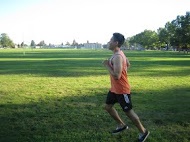A torn gastrocnemius muscle is a severe injury that is sustained on the back of the calf area of the leg. The muscle tissue fibers unlock and separate slightly during straining of the muscle. An excessive straining can tear this tissue so that any strength consistency of the fibers is lost and muscle strain symptoms can occur immediately due to total overuse. Weakness of the muscles, tissue inflammation and pain in the leg can be treated with home remedies and medical treatments.
The calf or gastrocnemius muscle can easily become strained by doing some exercises or sports that requires quick changes of direction like basketball or tennis. Strain on the muscles can be minimal which involves stretching muscle fibers until tender or strains that cause full muscle tears that will result to severe pain and occurrence of other symptoms.

Symptoms of torn gastrocnemius muscle
Symptoms of a torn gastrocnemius muscles will depend on its severity grade. Symptoms of a grade I only involve some fibers that are stretched or torn with mild tenderness and pain while the strength of the muscle is still intact.
For grade II, the pain is more severe and there is a swelling while the strength is reduced with possible bruising. As for grade III which is the most severe, the muscles are torn all the way through and functioning of the muscles is lost. There is a dent or gap found under the skin and can only be repaired by surgery. If you want to properly manage this condition, click here.
Treatment and home remedies of a torn gastrocnemius muscle
- Rest the affected muscle by not standing or walking. Bed rest is intended at not putting weight on the affected muscles for the first 48 hours.
- Apply cold compress at 10 minute intervals throughout the day with 10 minutes on and 10 minutes off. Light compression using an elastic bandage can be helpful and then elevate the calf muscle slightly higher than the heart. A calf muscle strain will produce swelling together with leg pain and muscle cramps or spasms. By applying cold compress immediately after the injury, this will help minimize the inflammation and pain.
- Take over-the-counter pain medications like aspirin or ibuprofen to relieve moderate leg pain.
- Rest should not be prolonged and start moving as soon as swelling disappears, but the calf muscle takes some stress during weight bearing motion. Wear compression bandages on the affected muscle and use a cane or crutches in order to relieve weight on the affected area.
- Take over-the-counter anti-inflammatory medications like acetaminophen, ibuprofen or aspirin in order to minimize swelling and pain.
- Wear a splint in order to keep the ankle in a neutral position in order to speed up healing.
- When the pain has subsided, begin doing some stretching exercises together with a massage therapy. Gradually increase the level of exercise by including leg presses, cycling and heel raises.
